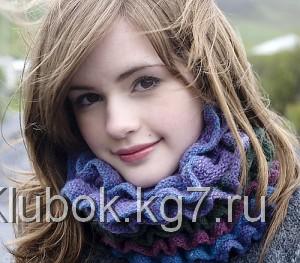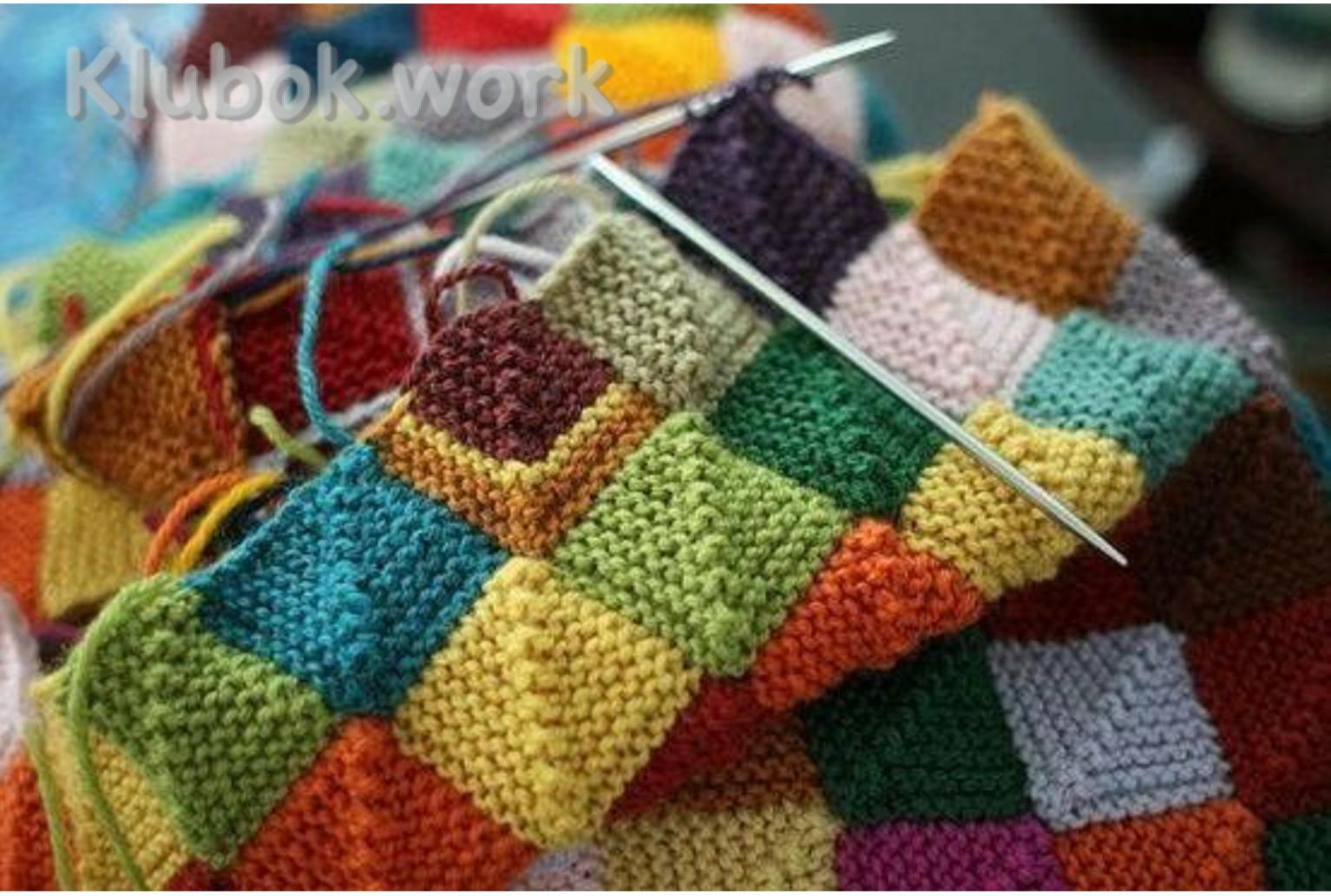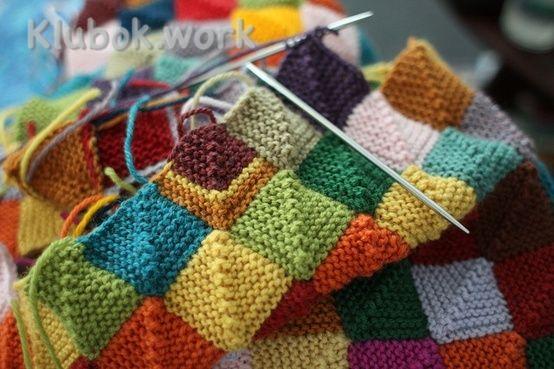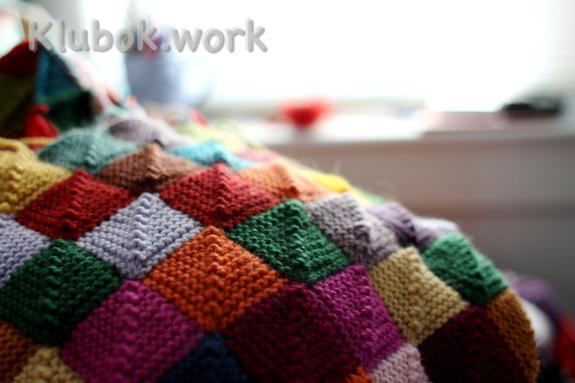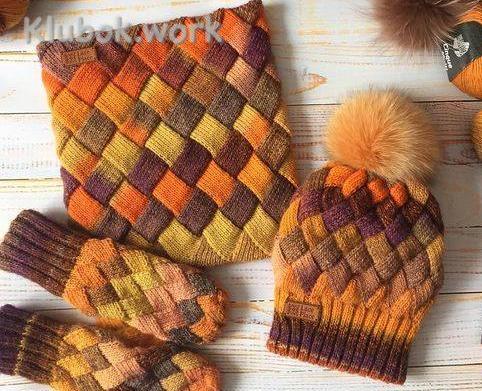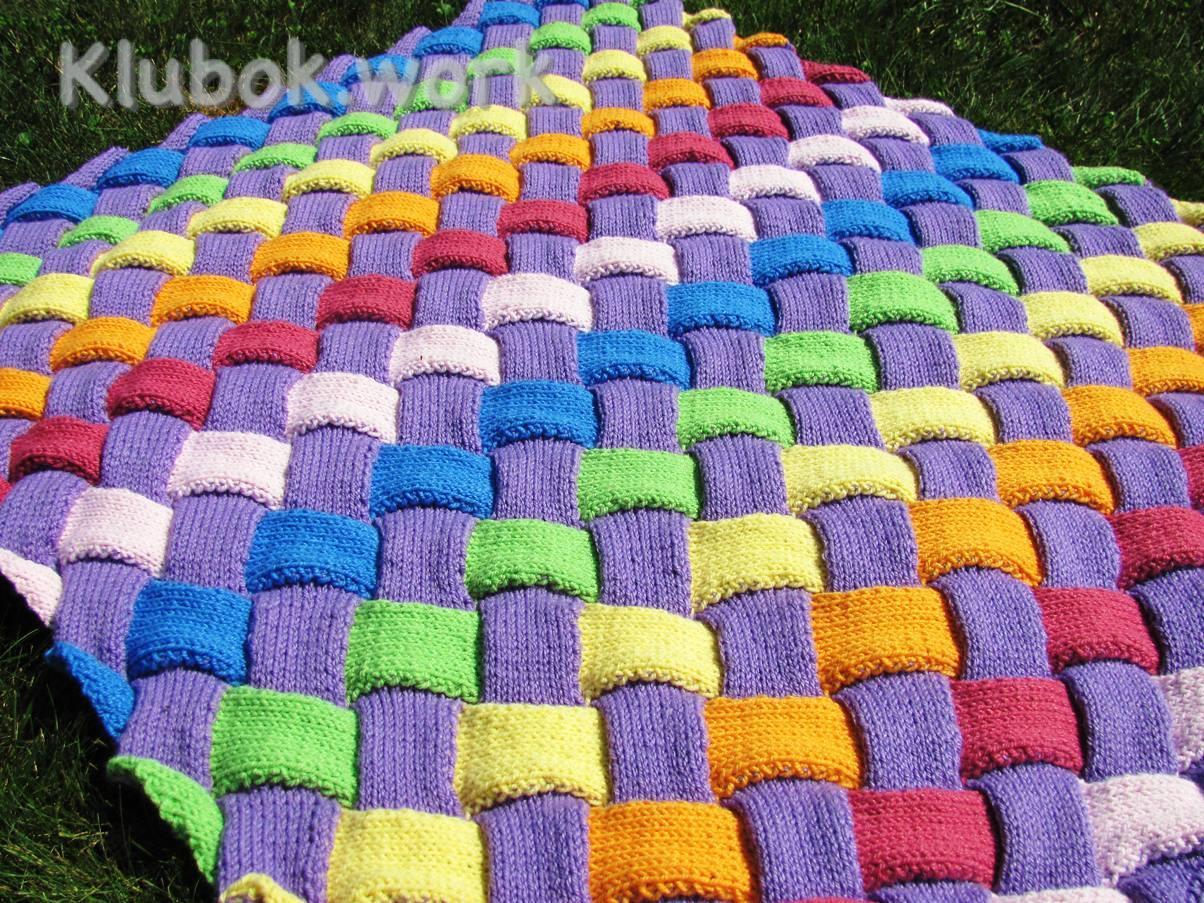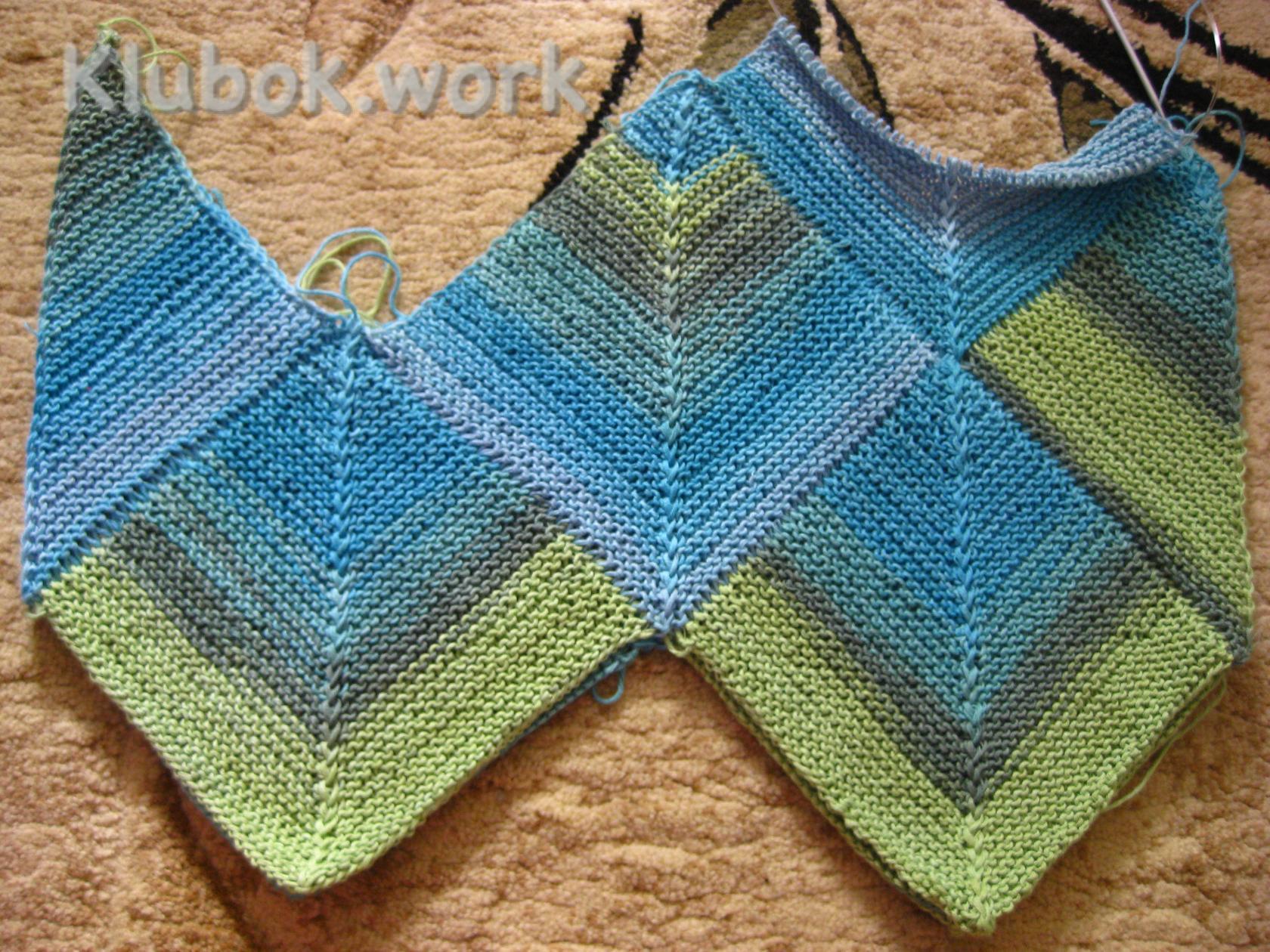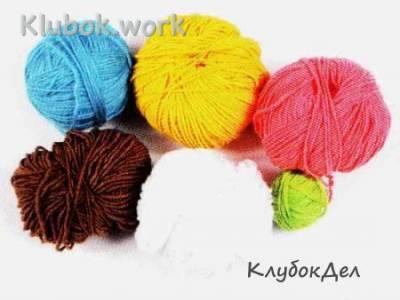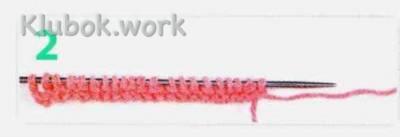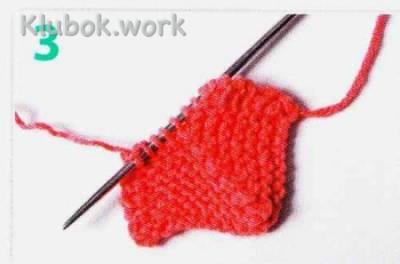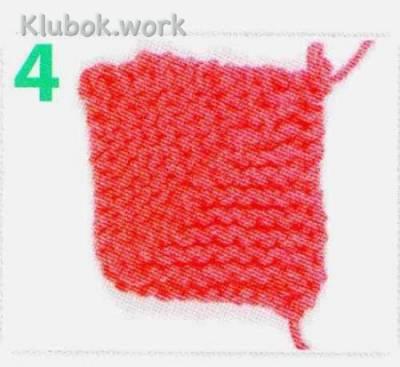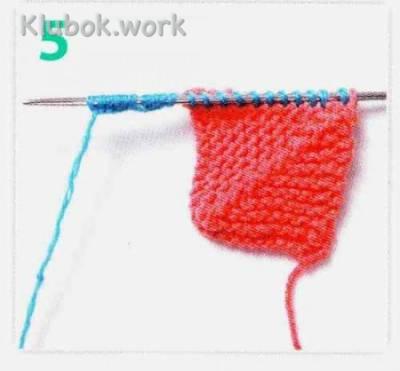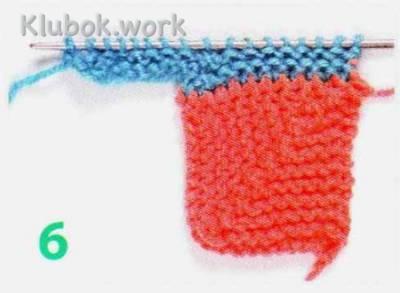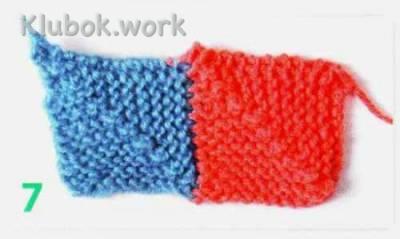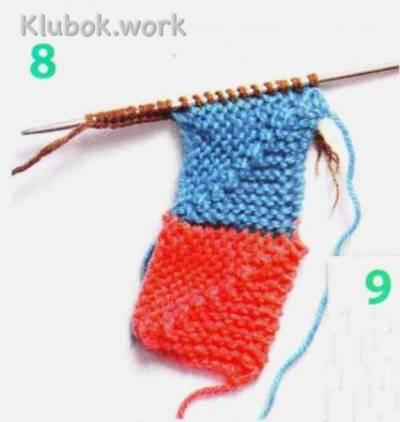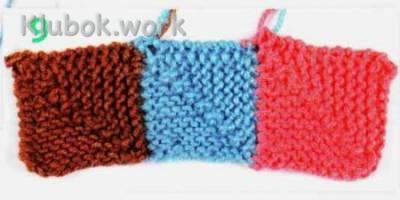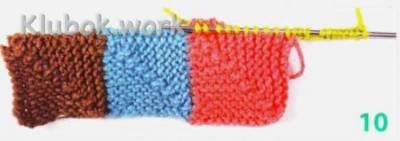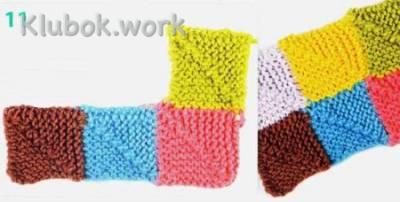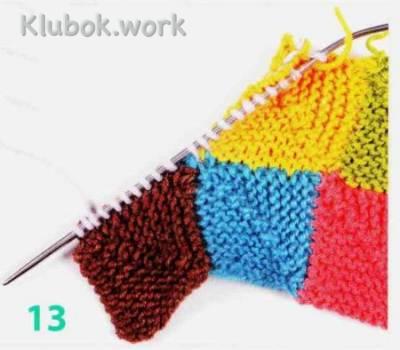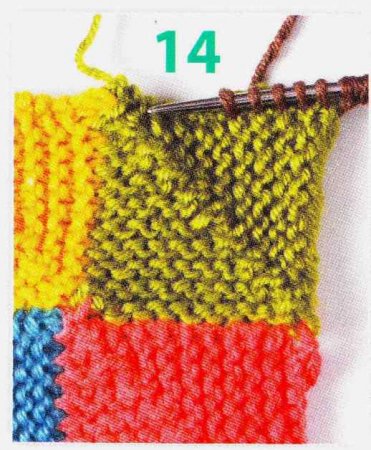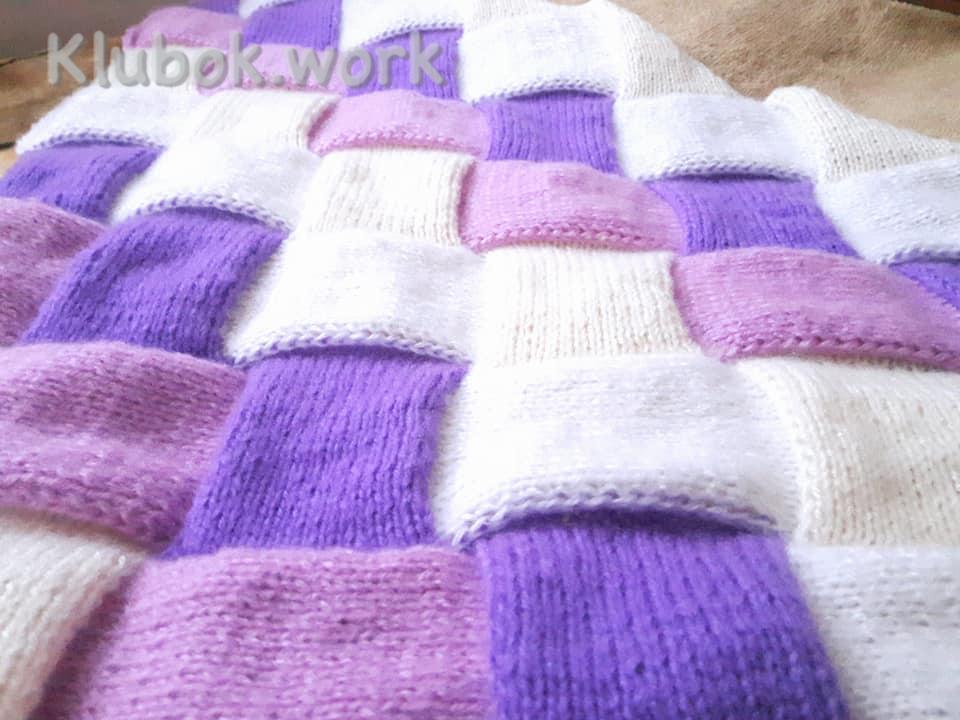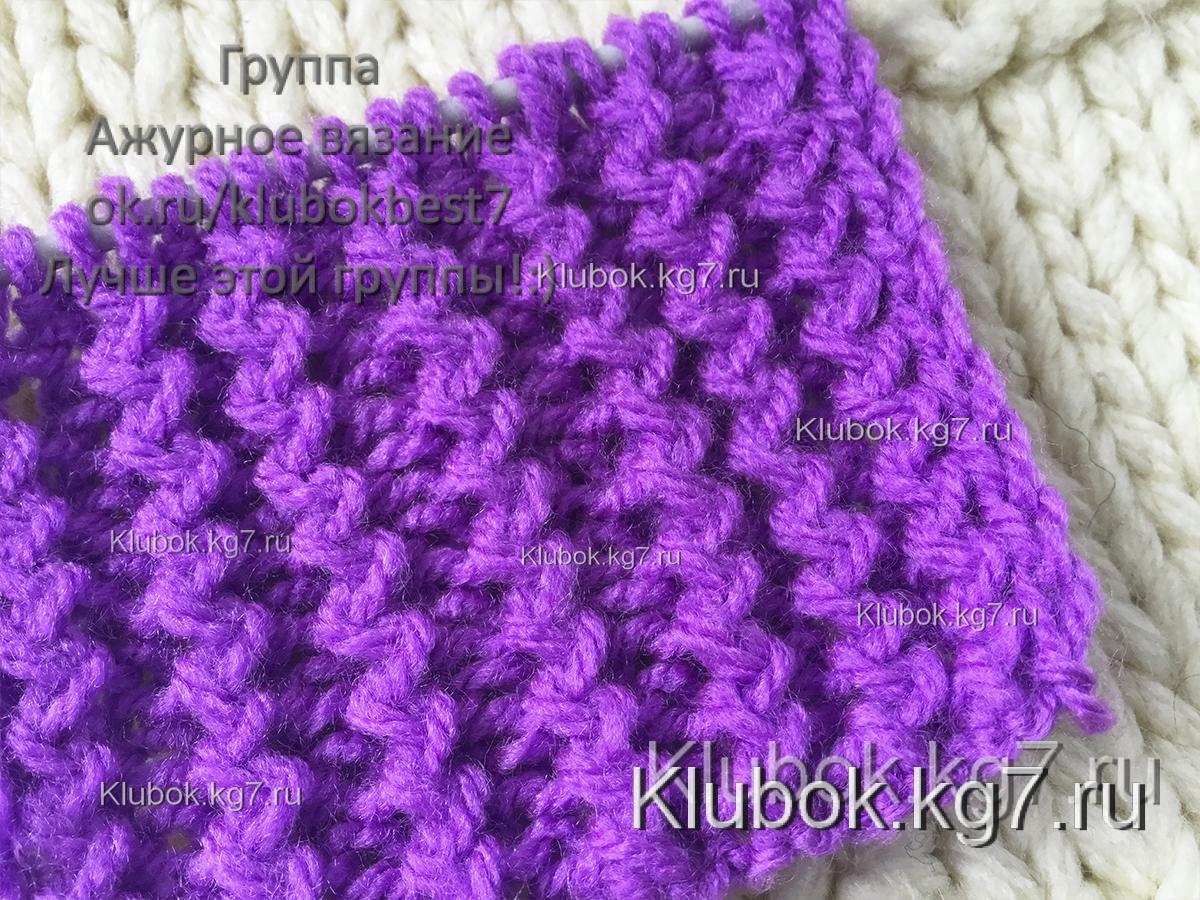Вязание на спицах в технике пэчворк
Добавлено: 13.06.2016 в 04:09 Просмотров: 324509
Вязание на спицах в технике пэчворкKlubokhttp://klubok.work/1/89/6430/Klubokhttps://klubok.work/css/image/top-logo-en.png
Вязать в этой технике может даже самая начинающая вязальщица, достаточно уметь вязать лицевые и изнаночные петли.
Работа Татьяны С.
Автор мастер-класса: NatalkaPl
Вязать в этой технике может даже самая начинающая вязальщица, достаточно уметь вязать лицевые и изнаночные петли
Итак, для вязания нам понадобятся ниточки, можно взять остаточки: разные клубочки, только по цветам их подобрать и чулочные спицы.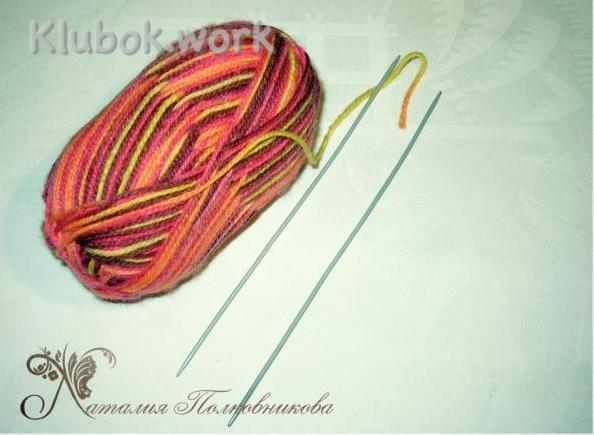
Для одного квадратика набираем 22 петли, по 11 на две стороны.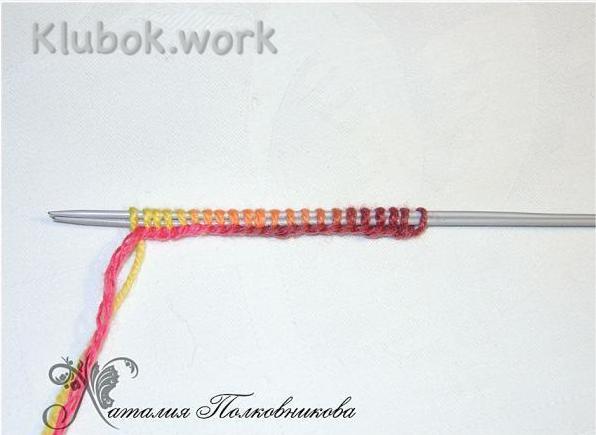
Первый ряд: провязываем лицевыми 10 петель, 11 и 12 петли провязываем вместе лицевой, и вяжем лицевыми до конца ряда.
Важно! Первую петлю мы всегда провязываем лицевой, а последнюю снимаем наизнанку (нить перед работой), не провязывая!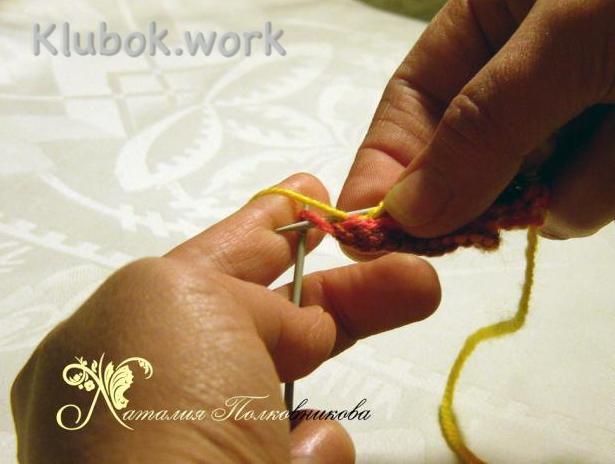
Это нужно для того, если вяжем цветными полосками, чтобы первая петля не смещалась в ряду по цвету.
Изнаночный ряд вяжем лицевыми, Не забываем — первую петлю провязываем лицевой, последнюю снимаем не провязывая, нить перед работой.
Дальше в каждом лицевом ряду провязываем вместе центральные три петли, пока на спице не останется одна петля.
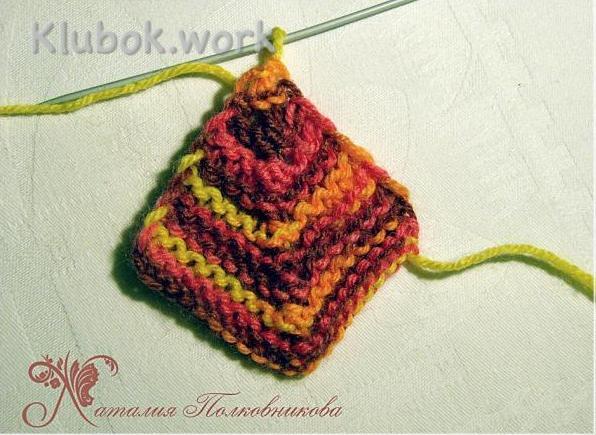
Маленький квадратик связан.
Теперь посмотрим, как вяжется половинка большого квадратика.
Для него нам надо набрать 44 петли.
Вяжем 1 ряд 10 лицевых, две вместе лицевой, 20 лицевых, две вместе лицевой, лицевые до конца ряда. Не забываем — последнюю петлю снимаем наизнанку. Изнаночные ряды вяжем лицевыми. Дальше во всех лицевых рядах провязываем вместе по три петли, там где в первом ряду вязали по две вместе.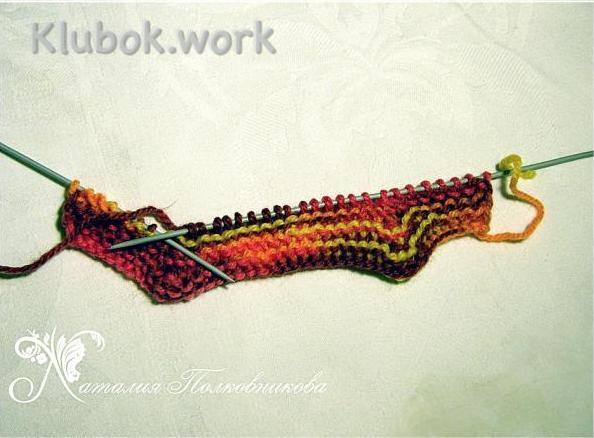
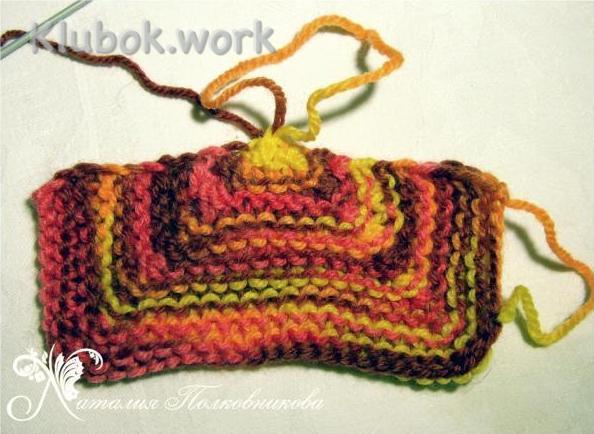
По такому же принципу вяжется и последний кусочек — три черверти квадратика.
Для него набираем 66 петель.
Первый ряд: 10 лицевых, две вместе лиц., 20 лицевых, 2 вместе лиц.,20 лицевых, 2 вместе лиц, лицевые до конца ряда. Последнюю петлю снимаем наизнанку.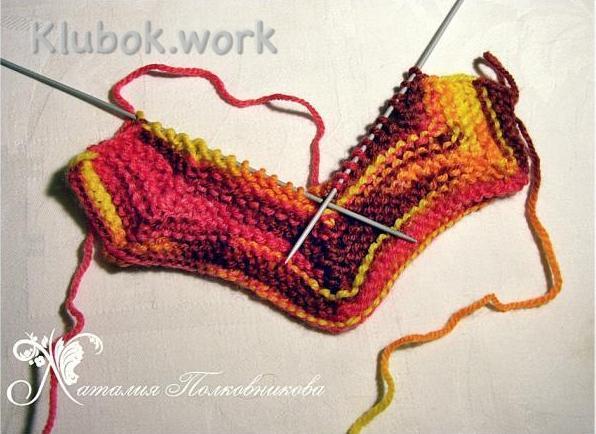
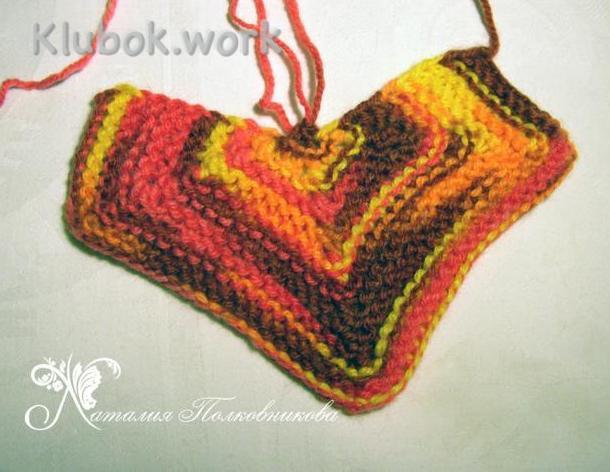
Это три основный элемента при вязании пэчворка спицами. Именно из них составляются все узоры. Дальше я покажу как они между собой соединяются.
Итак, начнем соединять наши кусочки в единое полотно.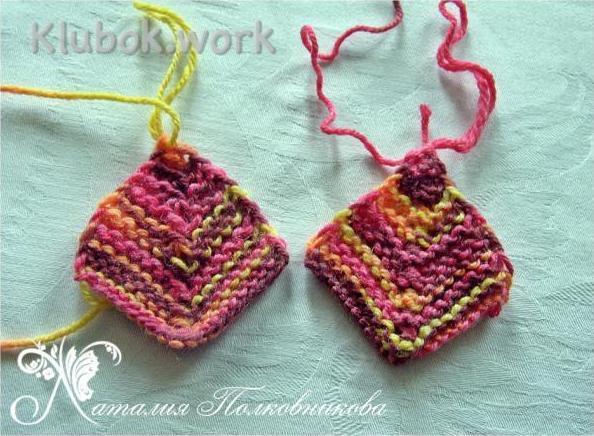
Из кромки двух квадратиков поднимаем 22 петли — 11 из одного и 11 из другого. И вяжем третий квадратик так же как и предыдущие.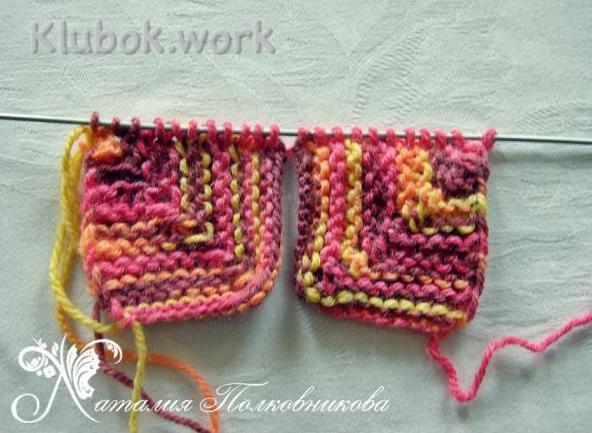
Готово!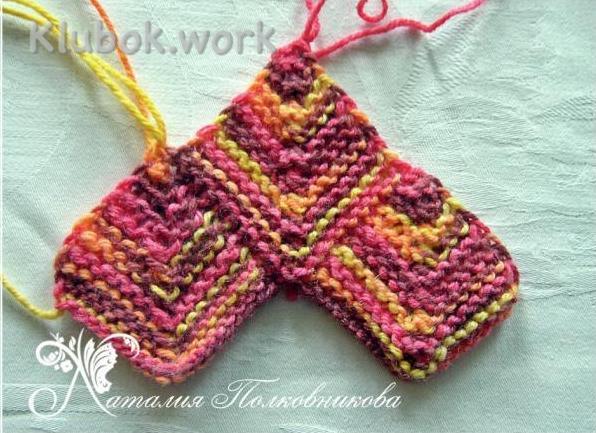
Если надо связать квадратик сбоку, а у нас есть только одна кромка, то поднимаем петли из кромки (11 петель) и еще 11 петель набираем на спицу.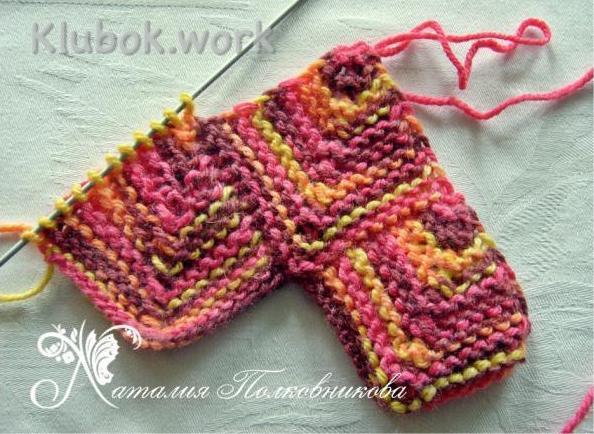
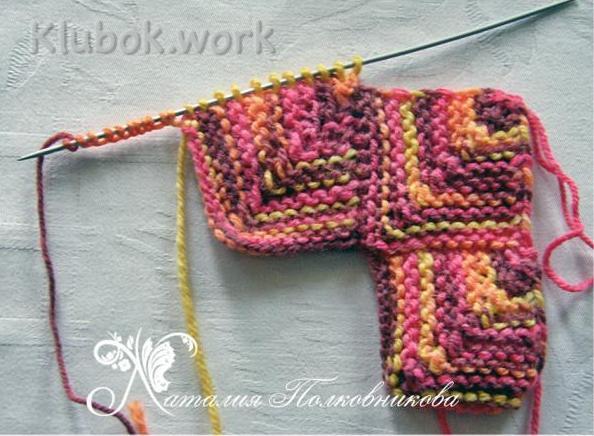
Таким образом вяжем полотно нужных размеров.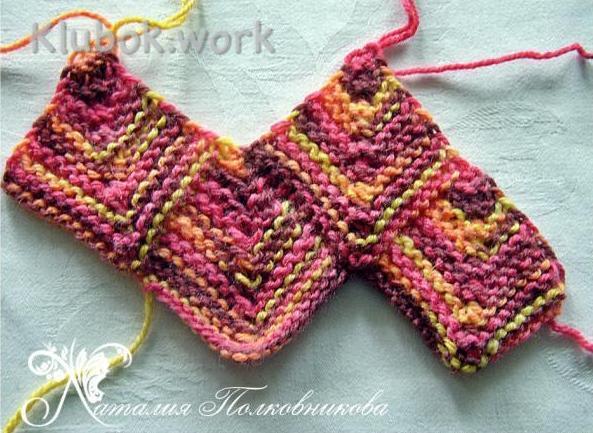
Другие элементы соединяются в полотно по такому же принципу.
Можно соединять элементы разный размеров, распологать в разном порядке — это все только Ваша фантазия.
Чтобы легче было работать я советую сначала на бумаге сделать выкройку и на ней нарисовать схему расположения ваших кусочков.
и еще один вариант вязания.
Пэчворк спицами чаще всего вяжется из квадратных мотивов.
Первый вариант - рукодельницы вяжут мотивы, а уже потом формируют изделия, не используя никаких схем.
Второй вариант - квадраты не сшиваются, а соединяются в процессе вязания. Для выполнения вязания в такой технике рукодельница должна уметь делать набор петель, вязать лицевые петли и делать убавления.
1. Для начала надо выбрать пряжу. Лучше всего чтобы пряжа была одного вида. Количество цветов пряжи подбираете на свое усмотрение.
2. Набрать на спицы 21 п. и вязать платочной вязкой: лицевые и изнаночные ряды - лиц. п. Край квадратов формировать узелками, для этого в начале ряда кромочную петлю снять, не провязывая, нить за работой, кромочную петлю в конце ряда вязать лицевой.
3. В каждом 2-м ряду делать убавления, провязывать по три центральные петли вместе (вторую и первую петли поменять местами, 2-я петля сверху, затем провязать 3 п. вместе).
4. В последнем ряду квадрата оставшиеся 3 петли провязать вместе, нить отрезать и закрепить.
5. Дальше приступить к вязанию второго квадрата. Для этого по кромочному краю первого квадрата набрать на спицу 11 п., затем набрать на спицу еще 10 п. (рабочей нитью накидывать воздушные петли на спицу).
6. Вязать платочной вязкой, делать в каждом 2-м ряду убавления, как в первом квадрате.
7. Оставшиеся 3 п. провязать вместе, нить отрезать и закрепить.
8. Третий квадрат набирать и вязать как второй.
9. Первый ряд квадратов вязать до желаемой ширины изделия, набирать и убавлять петли, как указано во втором квадрате.
10. Вывязав первый ряд квадратов, переходить к вязанию второго ряда квадратов. Для этого набрать на спицу 10 петель (рабочей нитью накиды¬вать воздушные петли на спицу), 1 п. из уголка и 10 п. набрать по верхней стороне первого квадрата.
11. Вязать платочной вязкой и делать убавления, как указано в предыдущих квадратах. В последнем ряду квадрата оставшиеся 3 петли провязать вместе, нить отрезать и закрепить.
12. Для вязания второго квадрата второго ряда по боковому краю первого квадрата второго ряда набрать на спицы 10 п., из угла 1 п. и по верхнему краю второго квадрата первого ряда набрать на спицы 10 п.
13. Затем все остальные квадраты набирать и убавлять, как второй квадрат второго ряда.
14. Далее 3-й, 4-й, 5-й, 6-й и т. д. ряды квадратов вязать по принципу второго ряда квадратов.




